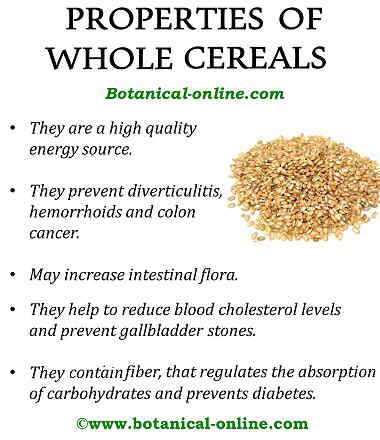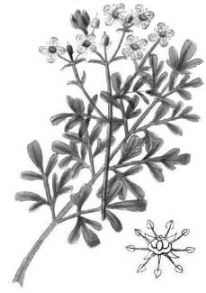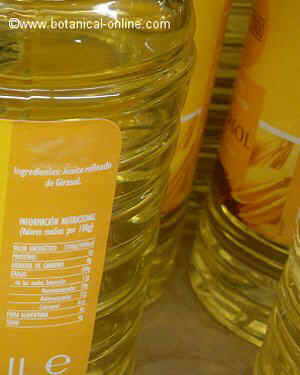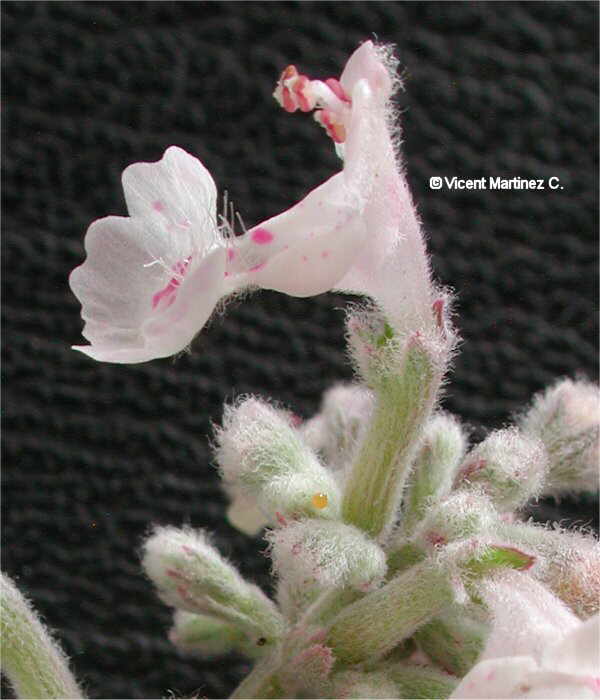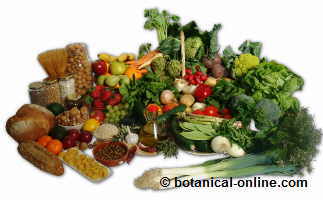Contents
PROPERTIES OF WHOLE GRAIN CEREALS
What are whole grain cereals?
Whole grain cereals are those that have not undergone a refinement process. They are those in which the grain retains all its parts.
Any cereal grain is formed by the following parts:
– Germ or embryo: formed by essential, mineral enzymes, proteins, fatty acids and vitamins, especially vitamin B and vitamin E. From this part of the seed arises the new plant. This part of the grain is usually removed in the refining process, mainly flour to remove the essential oils that can be rancid over time.
– Endosperm or albumen: The germ or embryo is separated of the endosperm by a permeable layer. The endosperm is the most abundant of a cereal grain and is the reservoir from which the new plant will feed until it can extract minerals and water from the soil with their roots. It is almost 80% of grain weight. This consists of carbohydrates (starch) for the most part and proteins. The album is, in practice, all that remains after the grain refining.
– Aleurone Layer: The endosperm this surrounded by an aleurone layer. This layer contains proteins and fats.
– Testa: It is a layer located over the aleurone, and it contains many vitamins and other nutrients.
– Pericarp: It is the outer layer. It’s a very hard layer, consisting of cellulose, which possess abundant minerals and consists of three layers that, from the outside to inside, are called exocarp, mesocarp and endocarp. This layer, together with the head, is also removed when the grain is refined, constituting the bran.
-The outer shell or husk: It is commonly called husks. It is formed by a kind of husk around the grain membrane and extending with an edge. This layer is not edible.
Main curative properties of whole cereals |
Whole grain cereals are rich in fiber
Whole grains, that’s to say, those who have not undergone a refining process, are very rich in fiber. Fiber is found mainly in the outer layers of the grain. The refinement consists of removing the outer layer to obtain white flour or non-whole grain. In refining cereals much fiber is lost. We know, for example, that wheat flour has about 12 gr. of fiber by each 100 gr. of weight, whereas the refined only reaches a little over 2 grams.
Fiber is necessary for the organism. Its role in the control of the constipation is crucial. Also its ability to decrease cholesterol levels has been recognized. We must not forget also the importance of this component has in preventing colon cancer. Regarding the former, fiber increases and promotes bowel evacuation faster. so that the toxins in the stool are expelled from the instestine before being absorbed by the body. Of all these, oats is particularly interesting for its fiber-highest percentage.
Cereals are very interesting in the prevention of breast cancer in women and the prostate cancer in men. Some cereals, like wheat, contain lignans, others as wheat or oats are rich in acid lactones. These compounds inhibit the development of human estrogen that appear to be responsible for the development of cancer cells (See more properties of fiber)
Whole grains are rich in vitamins and minerals
Whole grains are rich in vitamins that appear in both the outer layers as in the germ. Among all the vitamins, The most important one is vitamin E (wheat germ oil, with 20.3 mg of vitamin E per tablespoon is the richest food in this vitamin.) Vitamin E is a powerful antioxidant so its role in the detoxification of our body is vital. The combination of this vitamin with the lignans gives these foods their great power to neutralize free radicals and prevent these can damage our body. It has been shown that regular consumption of whole grains protects against heart disease, against mental degeneration that produces Alzheimer, or other forms of dementia, protects the eyes against the vision loss or the formation of the cataracts and, it is even a way to prevent cancer.
Whole grains are rich in vitamin B. Vitamin B is primarily responsible for maintaining the nerves in good state, for having the mind in good condition, and strengthen the defenses. Some, such as corn, for example, are very rich in vitamin B 9 (Folic acid), necessary for the correct development of the fetus. Corn is also very rich in vitamin B1 or thiamine. This vitamin is necessary for the body to convert food into energy and for the brain to absorb glucose, necessary for its proper functioning.
With regard to minerals, they all should not be refined to contain enough minerals. They are in the outer layers of the grain or seed coat. The main minerals containing cereals are iron, magnesium and calcium. For example, oatmeal is rich in iron, needed to prevent anemia and calcium, very useful for the formation of bones and teeth and to prevent osteoporosis. Equally interesting to keep the heart rate and for the proper functioning of muscles. Magnesium is involved in bone health and circulatory system. Its deficiency can lead, for example, to hypertension, arrhythmias,, diarrhea or hairloss.
Besides these three main minerals, the cereals contain other very interesting minerals for the health. Among them we have potassium, very suitable for fluid retention as well as the control of hypertension. (Rice is a very rich cereal in this mineral), phosphorus, copper, sodium, zinc or manganese.
![]() More information on cereals.
More information on cereals.

